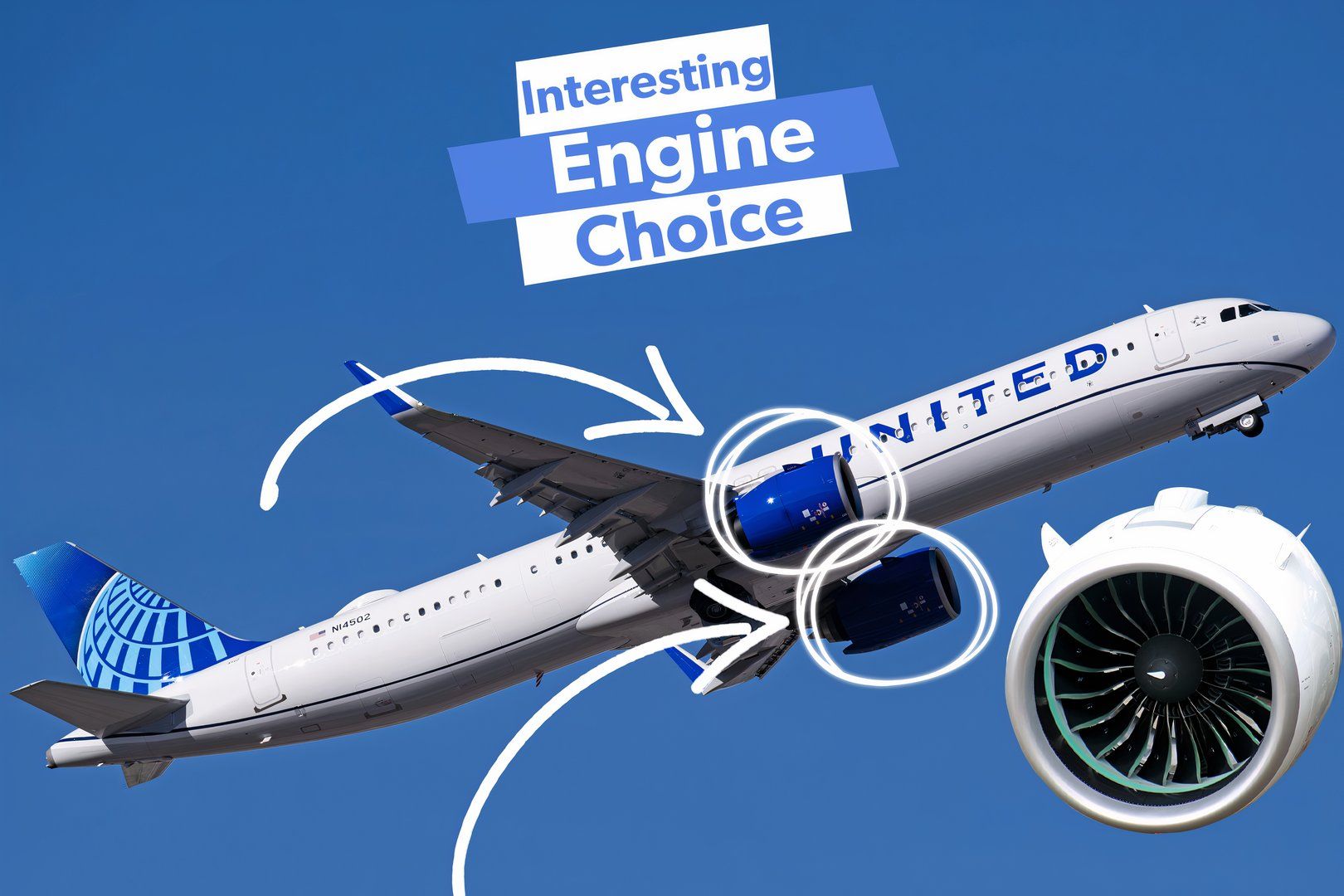Summary United Airlines' choice of Pratt & Whitney GTF engines for A321neos has led to operational setbacks. Disconnection in the supply chain has caused issues with multiple grounded aircraft due to engine problems. Despite supply chain and maintenance concerns, the PW1000 family engine offers efficiency and cost savings.
During last year's Paris Air Show , many were taken aback by United Airlines' surprise announcement to power its future A321neo family fleet, an order consisting of 70 A321neo and 50 A321XLR aircraft, with Pratt & Whitney GTF engines - the PW1000G. Given the American manufacturer's challenges at the time, many were surprised that United didn't choose to go with the competing CFM Leap-1A for its A321neo fleet. One year and many new issues later, the situation is even worse with the GTF engines.

Given that United's large fleet of Boeing 737 MAX aircraft is powered by CFM Leap engines, it is surprising that the carrier didn't choose an already familiar engine. Thus, all of the above begs the question: Why did United choose to power its future A321neo fleet with an engine seemingly against its interests? Pratt & Whitney's woes Fan diameter : 81 in (206 cm), 20 blades Bypass ratio : 12.5:1 Static thrust : 24,000–35,000 lbf (110–160 kN) Compressor : Axial flow, 1 geared fan, 3 stage LPC, 8 stage HPC Combustor : Talon-X Lean-Burn Combustor[ Turbine : Axial flow, 2-stage HP, 3-stage LP Length : 133.
9 in (3.401 m) Weight : 6,300 lb (2,858 kg) There are no questions about whether Pratt & Whitney has had a difficult time with its GTF family. Recently, a report by FlightGlobal indicated that 12% of GTF-powered A320neos were grounded, while an even larger 14% of A220 jets powered by the engine are currently idle.
The President and Chief Executive Chris Calio commented about the number of aircraft that are grounded for engine issues. “I’m not going to get into the specific numbers. When you look at the extended turnaround time that we have talked about, engines coming off [aircraft] today are going to have to wait a bit until they do get inducted.
” The issues have gone even further, with the Indian airline Go First claiming that the manufacturer and the GTF's issues were directly responsible for the airline's 2023 bankruptcy declaration . Another carrier used more vivid language to categorize their issues with Pratt & Whitney, with Air Astana's CEO calling their engine issues a "chronic illness." The engine itself is performing well, with 99% dispatch reliability.
The problem, however, has arisen due to the supply chain disconnectivity, with sourcing of parts, materials, and maintenance slots proving a challenge for P&W. The title of United Airlines' largest hub in terms of flights will change throughout 2024. Pros and cons for United Takeoff thrust : 33,110 lbf (147.
28 kN) Thrust-to-weight ratio: 3.85 – 5.26 Max Fan speed: 3,281 RPM Max LP rotor speed: 10,047 RPM Max HP rotor speed: 22,300 RPM To understand why United chose to make such a curious play, it is crucial to analyze the pros and cons of both engines for the carrier.
United does have experience with Pratt & Whitney engines, as they currently power 777, 767, and 757 aircraft within the airline's fleet. Thus, the carrier likely has a long-standing relationship with the manufacturer that could have motivated the decision to power their A321neos with the GTF engine. However, the aforementioned Leap-1A would be a far better choice from a maintenance perspective to power the airline's A321neos.
The airline would be able to maintain fleet commonality and streamline costs. Furthermore, the airline would not have to worry about GTF's supply chain problems, although these are hoped to be resolved in the next 12 months. However, if operating at performance standards, the PW1000 family engine does maintain a slight operational advantage for United, which could have influenced the decision.
The Pratt & Whitney engine has a higher bypass ratio than the Leap-1A, at 12.5:1, compared to the CFM's 11:1. Additionally, at just over 6,300 lbs, the GTF engine weighs slightly less than the Leap, which weighs over 6,600 lbs.
The company reported a $39 million net loss during the period. While these discrepancies may seem minute, the Pratt & Whitney-made engines are the most efficient and sustainable propulsion system for single-aisle aircraft. As such, United can realize some significant cost savings with this pick.
According to Pratt & Whitney , "The Pratt & Whitney GTFTM engine is the only geared propulsion system delivering industry-leading fuel efficiency and sustainability benefits. Our geared fan has fundamentally changed how more sustainable propulsion works. Having quickly become the foundation of our industry’s future, our gear system has re-set the bar on the good that all other advanced technologies can deliver – from advanced materials to hybrid-electric systems to sustainable aviation fuels.
" Thus, despite United's curious decision, specific reasons why the selection may have made sense for the American carrier can be identified. Pratt & Whitney manufactures a diverse range of jet engines, from fighter jets to airliners - with some claimed to be best in class..



















